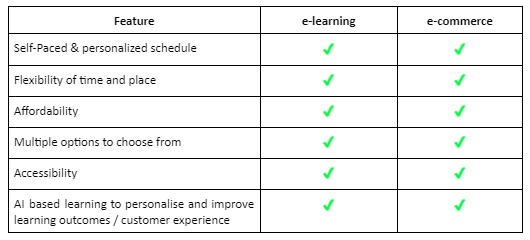The growth of the freelance economy:
There was a time when freelance writing was frowned upon and freelance writers were considered to be professionals with no ambition or clarity. Today, due to the digital revolution, there has been a paradigm shift in the way this industry is perceived. From a handful of writers in print media, today we have seasoned content developers in India, cross cutting and multi-generational in nature. They have partnered with a plethora of platforms to address the demand of best-in-class online content.
With the digital wave impacting all sectors including retail, banking, entertainment and transportation, content writing has become an important extension to digital marketing. It includes content in varied forms such as blogs, articles and web-content/ social media content.
Most young freelancers, with the growth of the gig economy in India, are keen on working on smaller projects today, rather than being tied to one company alone. The growth spurt of the digital economy presents a huge opportunity for writers and software vendors alike who can leverage the huge success that digital content will be riding on.
Dovetailing with software vendors:
According to Truelance, India has 15 million freelancers, second only to the US (53 million). IT (41%), Marketing (23%) and Design (21%) are the most popular skill sets, with data, content writing and digital marketing being the most sought after areas.
However, this rapid expansion of online content has also resulted in the mushrooming of content writers. The competition is steep and beginners and experienced writers alike find it overwhelming to find trusted clients. Without the skills and expertise to navigate across the web to generate attractive content using the latest softwares, it can often become challenging.
An average Indian freelance writer earns upto INR 10,000 (~USD 130) per month without anySME or domain knowledge. However, for experienced freelance writers with industry specific understanding, the sky’s the limit. To leverage the need of freelance writers to generate online traction to their content, partnering with software vendors presents with the following advantages:
- Improve search engine rankings and optimisation.
- Re-direct more traffic to one’s content.
- Add images to the content, increasing reader friendliness and simplifying explanations.
- Manage writing productivity, while mapping them to project deadlines.
- Easy and intuitive formatting of manuscripts, along with great online styling.
- Organizing content based on industry based need, popularity and success.
Making one’s writing stand out in the digital age:
Becoming a freelance writer today does not require one to have a bachelors or masters degree in mass communication. However, while in the past, a reasonable grasp of English along with the willingness to pick up an assignment was enough to get a content writer some gigs. Today it is expected that professionals seriously pursuing content writing should be familiar with industry jargons. These include digital marketing, short chain and long chain keywords, SEO, SMO, content design, content adaptation etc.
If one is a freelance writer looking for opportunities to produce well-stylised content that can gain immediate popularity, the fastest and most reliable process is to partner with the numerous software vendors. They can make the process easy and accessible, while improving both cost and time effectiveness. Software vendors like Canva are growing in popularity for helping freelance writers learn basic image editing.
With the growing audience on the internet, unattractive and un-stylised content is usually lost in the black hole. Hence, small skills such as these can make a large difference in getting content creators more work. Platforms such as PicMonkey and Mailchimp can also support writers with basic functionalities such as adding text to blog images and reels on newsletters. Softwares like Hubspot helps integrate content management with the customer experience. These platforms work hand in hand with the writer to give the content a deeper perspective and a more well-rounded look.
There are a plethora of other specific software tools that the modern day freelance content developer can choose from. Here are three most popular ones from the internet:
1. SEO content optimization tools:
These play a huge role in improving overall content writing. MarketMuse is one such dynamic SEO optimization tool that helps Google search results of freelance content significantly. It has an affordable pricing plan and uses advanced AI technology to conduct thorough research on a targeted key-word for instance. It also provides services like content optimization using UI/UX technology etc. This increases one’s real time content score while providing insights that help users build internal and external links.
2. Other software tools:
For instance like Surfer CEO helps the writer to optimise the content in any language. It has helpful SEO writing assistant tools such as keyword density, headings etc which often comes in handy. Surfer CEO also has another very impressive feature – content brief. This comes to the rescue for writers experiencing a creative block. It saves a lot of research time and helps one organize content in a more structured and efficient manner.
3. Organizing research, strategy and content:
This is also an important part of the job, sometimes more important than the real writing. Page Optimiser Pro is another tool that provides the writer detailed insights on strong strategy and competitor analysis. It helps create content that caters to a specific audience and is an extremely fast tool.
Softwares and software vendors to the aid of freelance authors:
While freelancers can make the use of freely available tools online, availing the help of dedicated softwares and software vendors can help them concentrate on their core competency (content development and writing). They can leverage technology and expertise to make their competency more visible to the wider (and targeted) audience.
Some advantages that an engagement with a software vendor can provide are:
1. Softwares and vendors can help an author edit and organise the content and proof-read it against errors. Using AI, softwares can understand the context of the author’s sentences and provide grammar, readability and style suggestions to enhance the content.
2. Designing of lay-outs forms an integral part of making content more appealing and reader-friendly. Softwares, with in-built lay-out and typesetting tools, can help an author create multicolumn pages, rich in stylish typography, graphics, images, videos and tables.
3. A number of softwares also provide additional features like ‘voice to text’ and ‘haptic technology’, which are useful to appeal to a larger audience.
4. In today’s digital world, integration of content with social media channels is extremely crucial for the author to achieve scale. Software vendors, using APIs, can help publish content be available instantaneously across different platforms like smartphones, tablets and laptops.
5. Analytics of traffic generated by the content, and customisation thereof, is made possible via reliable softwares and software vendors. Such analyses can help the content creator to further strengthen / curate her body of work. This helps generate more eyeballs and consequently, greater scale and revenue.
6. Softwares can also help aggregate data from multiple sources, that could be utilised by the content creator for gaining knowledge and using the information thus provided for generating richer content.
7. A software vendor can help the content creator develop apps and websites to showcase the work and make it available to a global audience.
8. Finally, software vendors can help customise the content for different formats of print media – flyers, reports, magazines, or brochures. A vendor can also be the interface between the content creator and a publisher – helping in the generation and distribution of physical copies of the e-content.
Final Thoughts:
By 2025, 900 million people in India are expected to have internet access in India. Such an active tech environment provides impetus to more opportunities for freelance writers. With diverse software tools and reliable software vendors, they can create digital content for a wide range of events, campaigns and initiatives through multiple forms. Consequently there is and will continue to be a growing dependence on the internet for web content, manuscripts, stories, scripts, reports, reviews and so on. Indian software vendors are beginning to realise the importance of online marketing in luring Indian audiences to good online content. This goal simultaneously requires good content creators who can use software vendors to their advantage, to further the growth of the freelance content writing industry.
————————————————————————————————————————-
Like other businesses, if you too are looking for IT Publishing solutions, Mindfire Solutions can be your partner of choice. We have significant experience over the years working with freelancers and publishing houses. We have a team of highly skilled and certified software professionals, who have developed many custom publishing solutions for our global clients over the years.
Here are a few interesting projects we have done. Click here to know more:
Application for Print Management.











